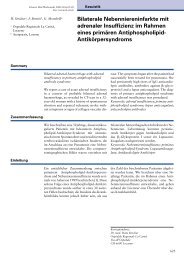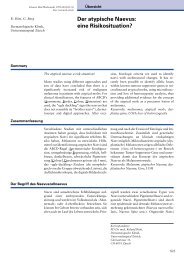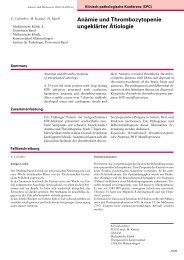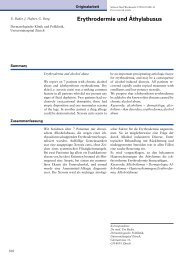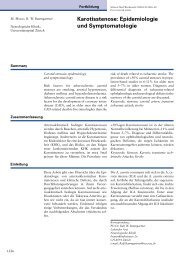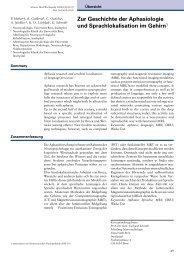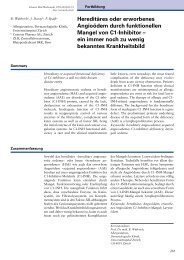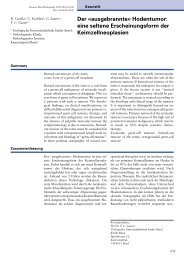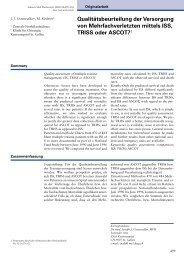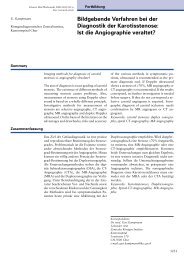SMW Supplementum 193 - Swiss Medical Weekly
SMW Supplementum 193 - Swiss Medical Weekly
SMW Supplementum 193 - Swiss Medical Weekly
Create successful ePaper yourself
Turn your PDF publications into a flip-book with our unique Google optimized e-Paper software.
25 S SWiSS Med Wkly 2012;142(Suppl <strong>193</strong>) · www.smw.ch Free communications<br />
patients (30%) showed a poor Merle d’Aubigné Score, of which three<br />
had to undergo THA (10%) because of acetabular erosion (grade 3<br />
in two patients, grade 2 in one patient). All patients showed mild<br />
migration of the femoral head (Baker grade 1) due to the cartilage<br />
erosion, whereas erosion of the bony acetabulum (Baker grade<br />
2 and 3) was only seen in 3 patients (10%).<br />
Conclusion: Hemiarthroplasty in patients younger than 65 years<br />
leads to unsatisfactory results. One third of the patients had to be<br />
converted to THA or had a poor functional outcome after 10 years.<br />
This may be due to the erosion of the acetabular cartilage seen in all<br />
patients, suggesting that cartilage erosion is an early event. However,<br />
erosion of the bony acetabular roof is rare (10%) in this relatively<br />
young patient group.<br />
FM96<br />
The Critical Shoulder Angle: A New Radiological Tool<br />
in the Assessment of Patients with Degenerative<br />
Shoulder Pathologies<br />
Beat Moor1 , Samy Bouaicha2 , Dominique A. Rothenfluh1 ,<br />
Atul Sukthankar1 , Christian Gerber1 1Uniklinik Balgrist; 2Division of Trauma Surgery,<br />
University Hospital of Zurich<br />
Background: The role of bony geometry for the development of<br />
degenerative disorders of the shoulder remains unclear. Some<br />
radiographic parameters have been studied as predictive factors<br />
for rotator cuff tears (RCT), but anatomical predictors for primary<br />
osteoarthritis (OA) have not been identified. We hypothesized that the<br />
combination of a wide acromion with an upward tilted glenoid fossa<br />
would be particularly prone to supraspinatus tears whereas a short<br />
lateral extension with an inferiorly inclined glenoid would lead to<br />
osteoarthritis of the glenohumeral joint. This hypothesis was tested<br />
using the so-called critical shoulder angle (CSA), a new radiographic<br />
parameter, which represents a measurement of the combination of<br />
glenoid inclination and lateral extension of the acromion.<br />
Methods: The CSA was measured in 94 asymptomatic shoulders<br />
with normal radiographs and sonograms, in 102 shoulders with<br />
documented RCTs without OA and in 102 shoulders with primary<br />
OA and absence of RCTs.<br />
Results: The mean CSA was 33.1 ± 2.0° in the control group, 38.0 ±<br />
2.7° in the RCT group and 28.1 ± 3.3° in shoulders with OA. These<br />
differences were all significant (p




